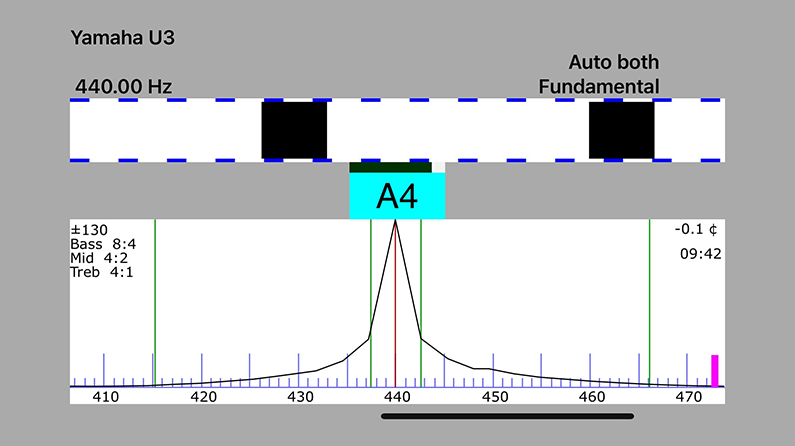When I think of the importance of tuning a piano to A440 (also known as Stuttgart pitch) two things come to mind:
First, is the history — A440 is the musical pitch that corresponds to the frequency of 440Hz as a tuning standard for notes of A above middle C. It was introduced in Stuttgart in the 1860s and eventually adopted in North America in the early 1930s. It’s an essential frequency, creating a baseline for pianos, brass instruments and even singers to work from.
Second, is my friend and piano mentor here in Guelph, Mike — who has perfect pitch, but grew up playing a piano tuned to a semitone flat. Whatever he played, he would hear a note below what his eyes told him it should be.
I don’t know why his family never fixed their piano, but Mike clearly went on to do just fine with his slightly imperfect perfect pitch. He heard the notes perfectly — he just had to take the extra step of “transposing” the note up a semi-tone every time.
His family could have solved this by pitch raising the piano itself, but for whatever reason — maybe the condition of the piano, maybe because pitch raises can be very tricky to pull off and they lacked confidence — they opted to let Mike keep figuring it out his way.
If you would like a more straightforward and stable approach, I highly recommend investing in a pitch raise if needed.
A pitch raise is a detailed procedure in which the piano technician tunes each string to an approximation of the target pitch, often making multiple passes to get it right. It’s an art and science to raise the pitch of a piano safely without damaging the piano or causing string breakage (though it can still happen to even the best of technicians).
Having a piano turned to the A440 standard pitch is key to developing one’s ear for music and collaboration with other musicians and singers.
At Oxford Piano, we like to take plenty of time to get to know the instrument and what it will take to do a successful pitch raise. For example, an antique Heintzman piano will have much less elasticity than a newer Yamaha piano and will require a very different approach. Diagnosing the right approach for each individual piano is the art and science of the pitch raise. It takes a high level of knowledge, skill and patience, but we believe it’s worth it!

